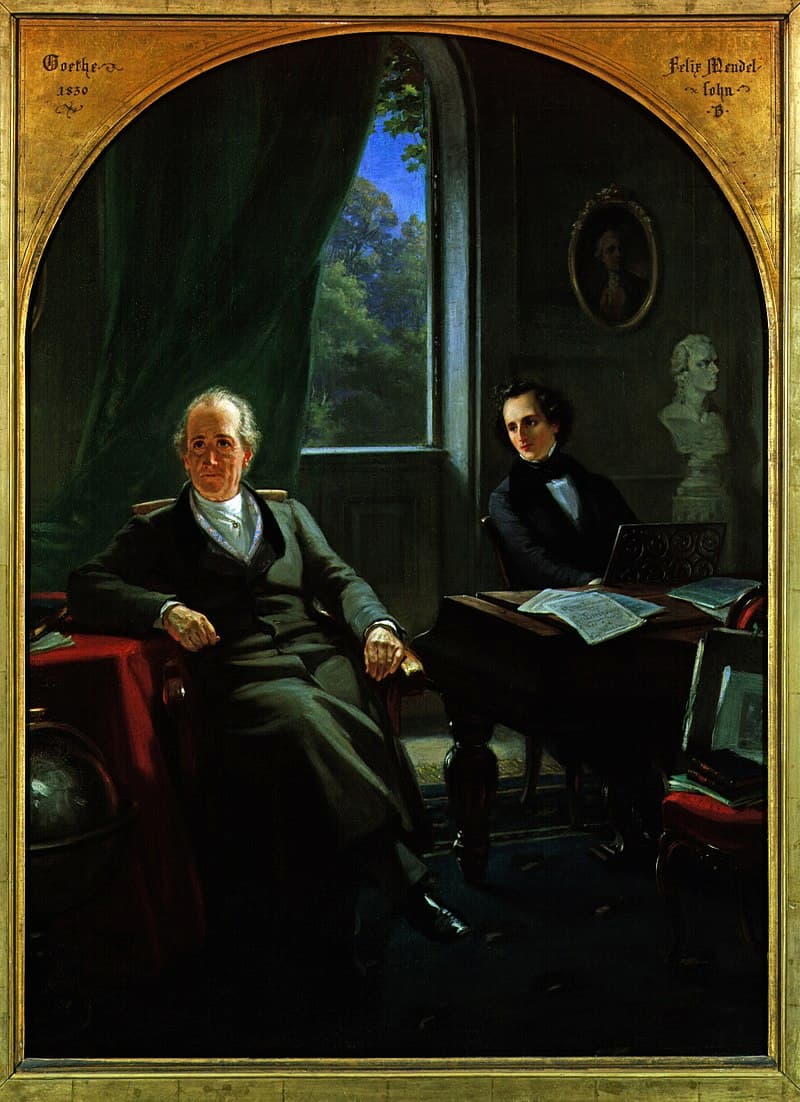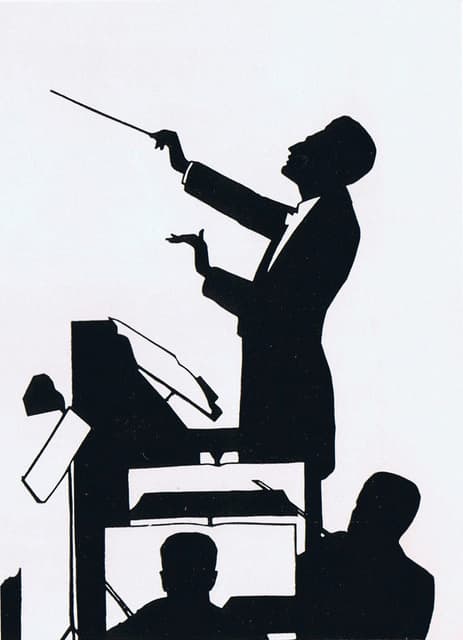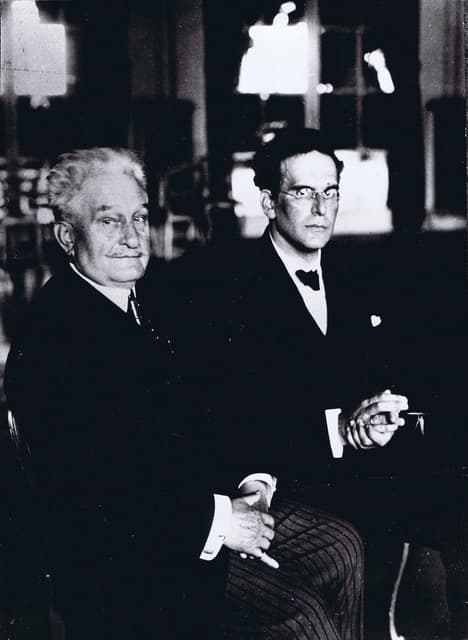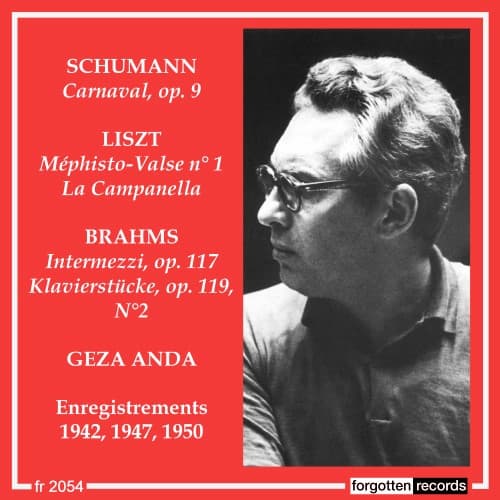Mendelssohn had the consummate skill to bring a landscape to life, whether it was the wilds of the Scottish Isles in his Symphony No. 3, or the warmth of Italy in his Symphony No. 4. Mendelssohn began writing his Italian Symphony while on a trip to Italy in 1830 and 1831 and completed the work in March 1833, just after his 24th birthday. He was the conductor at the premiere in London in May 1833 and the work was received well, but Mendelssohn thought the final movements needed more work. He held the work back from publication for several years and the final version wasn’t performed until 1849, two years after his death and was finally published in 1851.

Moritz Oppenheim: Mendelssohn plays to Goethe, 1830, 1864 (Jüdisches Museum, Frankfurt)
The joy we hear in the first movement is a reflection of the joy he felt in being in Italy. In a letter to his father he said: ‘This is Italy! And now has begun what I have always thought … to be the supreme joy in life. And I am loving it.’.
Each movement of the symphony takes on a different aspect of the life he observed in Italy. The joyful first movement is followed by a slow movement reflecting a religious procession he saw in Naples. The dance of the third movement is a standard minuet and trio and the final movement incorporates two different Italian dances, the quick Roman saltarello (a jumping dance), and the Neapolitan tarantella.
The first movement is in standard sonata form, with two contrasting themes that are presented, developed, and then restated at the end. He makes special use of the woodwinds to convey an Italian sound. The work feels like it was written, as one critic put it, in ‘white-hot inspiration’.
Felix Mendelssohn: Symphony No. 4 in A Major, Op. 90 “Italian” – I. Allegro Vivace

Silhouette of Klemperer directing in Strasbourg

Otto Klemperer and Leoš Janáček
This recording was made in Vienna in 1951, with Otto Klemperer leading the Vienna Symphony Orchestra. The orchestra was founded in 1900 as the Vienna Concert Society and it took its current name in 1933. The orchestra closed in September 1944 because so many members had war assignments in munitions factories. After the war, their first concert was in 1945 with a performance of Mahler’s Symphony No. 3. They were led by a series of brilliant conductors including Herbert von Karajan, Wolfgang Sawallisch, Carlo Maria Giulini up through Fabio Luisi from 2005-2013, and Andrés Orozco-Estrada, who left in 2022. They are currently without a chief conductor. The conductor on this recording, Otto Klemperer (1885-1973), was both a conductor and a composer. Klemperer studied music in Frankfurt and Berlin. He met Mahler in 1905 when he was conducting the off-stage brass for a performance of Mahler’s Symphony No. 2 and they remained friends. Forced to leave Germany in 1933, Klemperer ended up in the US in 1935, leading the Los Angeles Philharmonic. He became a US citizen in 1940 and he left the US in 1954 after health and political problems. His recordings in England with the Philharmonic Orchestra of the complete symphonies of Beethoven and Brahms re-established his reputation. This recording with the Vienna Symphony has sometimes surprisingly fast tempos, particularly in the final movement. For the first movement, the quick tempo works beautifully with the music.

Performed by
Otto Klemperer
Orchestre Symphonique de Vienne
Recorded in 1951
Official Website
For more of the best in classical music, sign up to our E-Newsletter



